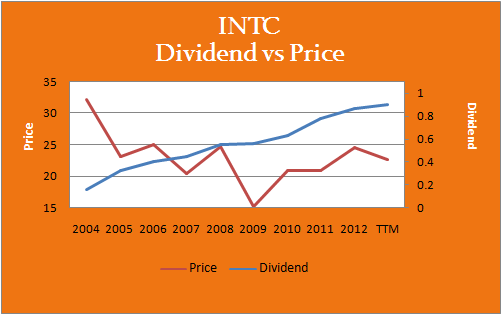How to Build a 4% Rule Retirement Portfolio
Post on: 17 Май, 2015 No Comment

Learn How to Achieve Financial Independence and Live Well
How to Build a 4% Rule Retirement Portfolio
2C99999 /%
The idea of building a portfolio that will last through decades of retirement can be intimidating. In this article I am going to show you how to build a simple and effective retirement portfolio based on the 4% rule .
There are two steps to building a simple and effective 4% rule retirement portfolio:
- Determine your asset allocation
- Choose your investments
Determine Your Asset Allocation
The first step to building a simple and effective 4% rule retirement portfolio is to determine your asset allocation. Vanguard’s Retirement Nest Egg Calculator is the perfect tool. The tool works by using historical average returns from various stock, bond, and cash indices to run a monte carlo simulation .
The tool is very easy to use. You start by using the slider bars to input how many years your retirement portfolio should last, the value of your portfolio, and how much you want to withdraw from your portfolio each year. The amount you withdraw is adjusted for inflation in future years. The tool uses the Consumer Price Index to estimate inflation.
Next you enter your desired asset allocation between stocks, bonds, and cash. Finally, you push the “Run Simulation” button. The tool returns the chances that your retirement portfolio will last the number of years you entered.
You can play around with the inputs until you achieve your desired mix of risk and reward. I prefer an allocation of 75% stocks and 25% bonds. I keep a small amount of cash on hand to cover daily expenses.
Any retirement portfolio that has about a 90% chance of survival is good enough for me. I mitigate the 10% risk by diversifying my retirement portfolio. I invest in other assets such as real estate and unsecured notes.
I also dynamically adjust my withdrawal amount in the event of poor market conditions. If the market performs poorly, I will cut down my discretionary spending.
The retirement portfolio you choose may not have a 4% withdrawal rate. Higher withdrawal rates carry more risk while lower withdrawal rates carry less risk. You must build a retirement portfolio with a level of risk that is acceptable to you.
The next step to building a simple and effective 4% rule retirement portfolio is to choose your investments. There are thousands of stocks and bonds available, but very few great stock pickers. I know I am not one of them so I don’t even try. Fortunately there are wonderful products out there for people like me.
I invest in index funds with Vanguard . Vanguard has a wide range of low cost products that are perfect for building a retirement portfolio. By no means do I intend this to be an advertisement for Vanguard. There are other great fund companies like Fidelity .
Rather than try to give examples of every possible fund to meet your needs, I will use Vanguard as the example. To find similar funds with other firms, simply do an internet search with the name of the firm and the index you wish to benchmark.
Select Your Stock Investments
The Vanguard Retirement Nest Egg Calculator uses the MSCI US Broad Market Index for simulating the stock portion of your retirement portfolio. Vanguard’s Diversified Equity Fund (VDEQX ) is designed to match the performance of the index. I prefer to use Vanguard’s Total Stock Market Index Fund Admiral Shares (VTSAX ). It is similar to the Diversified Equity Fund but has lower expenses.
A better strategy is to invest in a combination of a large-cap fund and small- and mid-cap fund. For large-caps consider Vanguard’s 500 Index Admiral Shares (VFIAX ) which seeks to match the performance of the S&P 500. The 500 Index Fund covers about 75% of the total US stock market value.
For small- and mid-caps invest in Vanguard’s Extended Market Index Fund Admiral Shares (VEXAX ). The Extended Market Fund covers the remaining 25% of the total US stock market value.
The 500 Index Fund and the Extended Market Fund working together will give you exposure to the entire US stock market. Using the two fund approach gives you several advantages.
First, you can increase your risk/reward by investing in a larger allocation of small- and mid-caps. Small- and mid-cap stocks have a greater potential for growth. Likewise, small- and mid-cap stocks carry a higher risk than large-cap stocks.
Another advantage of the two fund strategy is that you can choose to withdraw from the better performing fund and hold onto the other. Large-caps don’t always perform the same as small- and mid-cap stocks.
The world is a big place. If you want exposure to markets outside the US, consider allocating 5% to 10% into Vanguard’s Total International Stock Index Fund Admiral Shares (VTIAX ).
Here is an example stock allocation for your retirement portfolio:
- 65% Vanguard 500 Index Admiral Shares (VFIAX )
- 25% Vanguard Extended Market Index Fund Admiral Shares (VEXAX )
- 10% Vanguard Total International Stock Index Fund Admiral Shares (VTIAX )
To increase your risk/reward, increase your allocation in the Extended Market Fund and reduce your allocation in the 500 Index Fund. To decrease your risk/reward, decrease your allocation in the Extended Market Fund and the Total International Stock Fund and increase your allocation in the 500 Index Fund.

Select Your Bond Investments
The Vanguard Retirement Nest Egg Calculator uses the Spliced Barclays US Aggregate Float Adjusted Bond Index for simulating the bond portion of your retirement portfolio. Vanguard’s Total Bond Market Index Fund Admiral Shares (VBTLX ) is designed to match the performance of the index.
The Total Bond Market Fund invests about 70% in government bonds. As a result, it tends to be quite conservative. If you want to increase your risk/reward consider allocating 10% to 25% in Vanguard’s High-Yield Corporate Fund Admiral Shares (VWEAX ) or Vanguard’s Long-Term Investment-Grade Fund Admiral Shares (VWETX ).
The High-Yield Corporate Fund invests in junk bonds. The Long-Term Investment-Grade Fund invests in higher quality bonds. Both funds will increase your exposure to corporate bonds.
Here is an example bond allocation for your retirement portfolio:
- 75% Vanguard’s Total Bond Market Index Fund Admiral Shares (VBTLX )
- 15% Vanguard’s Long-Term Investment-Grade Fund Admiral Shares (VWETX )
- 10% Vanguard’s High-Yield Corporate Fund Admiral Shares (VWEAX )
To increase your risk/reward, increase your allocation in the Long-Term Investment-Grade Fund and reduce your allocation in the Total Bond Market Fund. To decrease your risk/reward, decrease your allocation in the Long-Term Investment-Grade Fund and the High-Yield Corporate Fund and increase your allocation in the Total Bond Market Fund.
Select Your Cash Investments
The Vanguard Retirement Nest Egg Calculator uses the Citigroup 3-Month Treasury Bill Index for simulating the cash portion of your retirement portfolio. I do not recommend holding a significant portion of cash in your portfolio. Low interest rates make cash a bad investment. If you do wish to hold cash, invest in a good money market fund like Vanguard’s Prime Money Market Fund (VMMXX ).
A Solid 4% Rule Retirement Portfolio
Stocks (75%)
- 50% Vanguard 500 Index Admiral Shares (VFIAX )
- 18% Vanguard Extended Market Index Fund Admiral Shares (VEXAX )
- 7% Vanguard Total International Stock Index Fund Admiral Shares (VTIAX )
Bonds (20%)
- 13% Vanguard Total Bond Market Index Fund Admiral Shares (VBTLX )
- 4% Vanguard Long-Term Investment-Grade Fund Admiral Shares (VWETX )
- 3% Vanguard High-Yield Corporate Fund Admiral Shares (VWEAX )
Cash (5%)
- 5% Vanguard Prime Money Market Fund (VMMXX )
The above portfolio is the type you would have while in retirement. Many experts would consider it to be too aggressive. I disagree. If you want a retirement portfolio with very little risk, you may end up working your entire life to generate the required funds. I’ll take my chances.
If you are still working towards retirement, you should be even more aggressive. I recommend allocating 100% in stocks with a greater emphasis on small- and mid-caps:
- 40% Vanguard 500 Index Admiral Shares (VFIAX )
- 45% Vanguard Extended Market Index Fund Admiral Shares (VEXAX )
- 15% Vanguard Total International Stock Index Fund Admiral Shares (VTIAX )
A Word about Vanguard’s Admiral Shares
All of the funds that offer Admiral Shares also have an Investor Shares option. Vanguard’s Admiral Shares are lower cost than the Investor Shares. However, Admiral Shares require a larger minimum balance. The required minimum balance is usually $10,000 but could be as much as $50,000.
Vanguard also offers an Exchange Traded Fund option. ETFs are attractive from the standpoint that you can choose when to execute a taxable event. Mutual funds have required taxable distributions. ETFs can also be traded during the day like stocks. Mutual fund orders are placed at the end of the trading day.
Here are the key takeaways:
- Use Vanguard’s Retirement Nest Egg Calculator to determine your asset allocation and withdrawal rate
- Make sure your portfolio has at least a 90% chance of surviving
- Invest in index funds that have broad market exposure
- Invest in assets other than stocks and bonds like real estate to reduce risk














